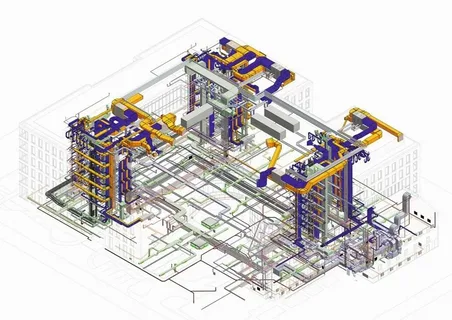Building Smarter: 7 Practical Tips to Streamline Your Design Process
In today’s fast-paced construction and design world, efficiency is everything. Designers and architects constantly juggle deadlines, budgets, and countless revisions. The key? Streamlining your design process to save time and boost creativity. If you’re working in the USA, optimizing your workflow isn’t just a luxury — it’s a necessity to stay competitive.
Let’s dive into seven practical tips to help you build smarter and simplify your design projects.
Understanding Your Workflow Before Making Changes
Before you can improve your design process, you need to understand how things currently work. Spend some time tracking your typical project steps from start to finish. This helps spot bottlenecks or repetitive tasks that slow you down.
Consider:
- What tools are you currently using?
- Where do delays happen most often?
- Which stages take the longest?
Mapping your workflow helps you target improvements where they matter most.
Embrace Digital Tools Wisely

Digital tools can either speed things up or create more chaos if chosen poorly. Look for software that integrates smoothly with your existing setup and supports collaboration.
For example, many firms now rely on bim modeling service providers. These services use Building Information Modeling (BIM) to create detailed, data-rich 3D models that bring clarity and precision to every stage of the design process.
BIM helps teams catch design clashes early, coordinate across disciplines, and produce better documentation. According to a 2022 report by the National Institute of Building Sciences, BIM adoption has reduced costly errors by up to 40%, making it a smart investment.
Standardize Your Templates and Libraries
Creating project templates and reusable content libraries saves valuable time. Instead of starting from scratch, have a set of approved templates for drawings, reports, and presentations. This keeps your work consistent and reduces repetitive setup tasks.
Build a shared resource library with common elements like doors, windows, fixtures, and finishes. Teams across different projects can then pull from these trusted assets, cutting down duplication and errors.
Foster Clear Communication Channels
Miscommunication can wreck even the best design plans. Use collaboration platforms that keep all stakeholders — designers, engineers, clients — on the same page.
Regular check-ins, clear documentation, and shared review tools help catch issues early. A study by McKinsey found projects with effective communication are 30% more likely to finish on time and within budget.
Break Large Projects into Manageable Phases
Trying to handle everything at once overwhelms teams and leads to mistakes. Break projects into smaller phases or milestones. Focus on completing each phase thoroughly before moving on.
This phased approach allows for easier tracking, quicker feedback, and better resource allocation. It also helps clients see steady progress, building trust along the way.
Leverage Automation Where Possible
Automation isn’t just for factories — design workflows benefit too. Use tools that automate repetitive tasks like quantity takeoffs, clash detection, or document updates.
For instance, some BIM platforms can automatically flag inconsistencies in your model, freeing your team to focus on creative problem-solving. According to the Construction Industry Institute, automation can boost productivity by 15-20%.
Keep Learning and Adapting
No process is perfect from the start. Regularly review what works and what doesn’t. Seek feedback from your team and clients, and stay open to new methods and technologies.
Attend local workshops, webinars, or industry events to stay current. For those in the USA, many regional chapters of the American Institute of Architects (AIA) offer resources and networking to keep your skills sharp.
Local Focus: How Bentley BIM Supports USA Design Firms

When it comes to powerful BIM software, bentley bim stands out, especially for firms across the USA. Known for its advanced modeling and infrastructure capabilities, Bentley BIM supports complex projects from bridges to skyscrapers.
Many American design teams benefit from Bentley’s robust collaboration tools and integration with local standards. The platform also partners with US-based engineering groups to tailor features that meet regional needs.
For example, the US General Services Administration (GSA) has adopted Bentley BIM solutions for several federal building projects, showcasing trust in its reliability.
If you’re in a competitive market like New York or California, using Bentley BIM can give your projects a cutting-edge advantage.
Conclusion
Streamlining your design process isn’t just about saving time. It’s about building smarter, reducing costly mistakes, and delivering higher-quality projects that clients trust.
Start by understanding your workflow, embrace the right tools like BIM, standardize your resources, and keep communication clear. Break projects into manageable steps, automate what you can, and never stop learning.
With these seven practical tips, design teams across the USA can improve efficiency and stand out in a crowded field.

